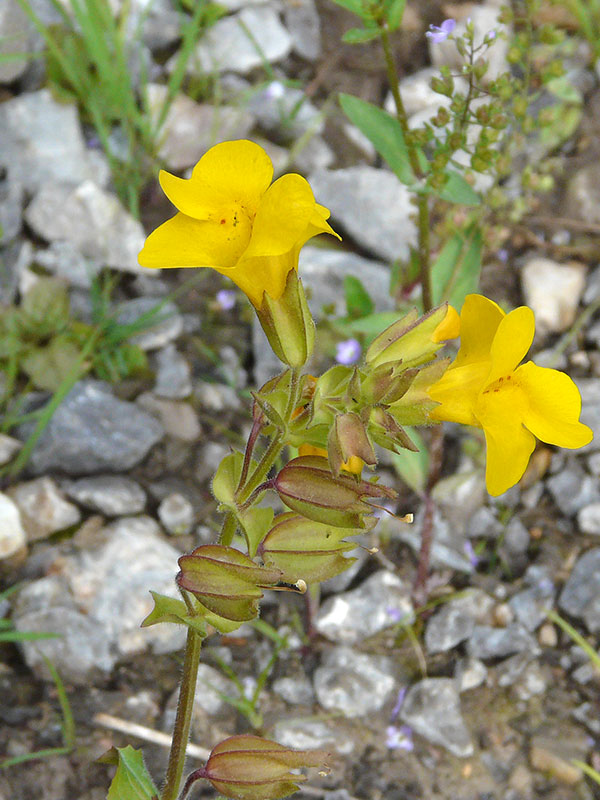Erythranthe guttata / seep monkeyflower
- yellow flowers with red spots in clumps of 5 or more
- flowers large for the plant, but otherwise “normal” size
- two “lips” – lower lip larger than upper, each with 2 petals
- found in wetlands of all kinds
Synonym: Mimulus guttatus (and many others)
Also known as: common yellow monkeyflower, spotted monkeyflower, golden monkeyflower
If you find yourself walking along any of the streambanks, seeps, bogs, fens or wetlands that characterize the Valley, and you see a cheerful, sunny yellow flower a bit over an inch big, look more closely. Indeed, it can even grow in the slowly moving streams. If it has two clear “lips” and perhaps some small reddish spots toward the “mouth”, you have probably found the seep monkeyflower. As you look some more, you’ll probably see that the flowers come in groups of 5 or more along a central stem (i.e. a raceme) and that they look sort of like snapdragons. They seem disproportionately large for the plant itself.
Around the Valley, the seep monkeyflower is likely to be an annual although in warmer climes it can be perennial. It is mostly bee pollinated, although it can also self-pollinate (but with lesser vigor in the seeds). The perennial forms spread by stolons and rhizomes and may root at leaf nodes if they contact soil or muck.
Monkeyflower stems are fleshy, and the leaves oval to round, irregularly toothed, with pointed tips. The upper leaves are sessile, more or less clasping stem, while the lower leaves have short petioles.
Evolutionary and ecological plant biologists have a special affection for Erythranthe guttata. It has been accepted as a model organism for their studies, and in that context is still known by the name it had before the systematists reclassified it – Mimulus. The genome has also been sequenced for study in-depth and there are ca. 100 scientific articles centered around the molecular aspects of monkeyflower adaptation and evolution. Because it can grow in a range of environments from the Pacific Ocean splash zone to the chaparral and deserts of the West, to around the geysers in Yellowstone, to alpine meadows and serpentine barrens to copper mine tailings, the seep monkeyflower can also be considered an “extremophyte“.
| Color | |
|---|---|
| Family | |
| Blossom size | |
| Inflorescence size | |
| Inflorescence type | |
| When? | |
| Where? |




